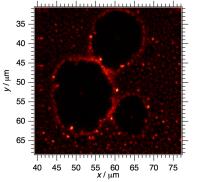Surface engineering of perovskite films for efficient solar cells
Scientific Reports, 7 (1):
14478-- (2017)DOI: 10.1038/s41598-017-14920-w
Abstract
It is critical to prepare smooth and dense perovskite films for the fabrication of high efficiency perovskite solar cells. However, solution casting process often results in films with pinhole formation and incomplete surface coverage. Herein, we demonstrate a fast and efficient vacuum deposition method to optimize the surface morphology of solution-based perovskite films. The obtained planar devices exhibit an average power conversion efficiency (PCE) of 13.42% with a standard deviation of ±2.15% and best efficiency of 15.57%. Furthermore, the devices also show excellent stability of over 30 days with a slight degradation <9% when stored under ambient conditions. We also investigated the effect of vacuum deposition thickness on the electron transportation and overall performance of the devices. This work provides a versatile approach to prepare high-quality perovskite films and paves a way for high-performance and stable perovskite photovoltaic devices.
